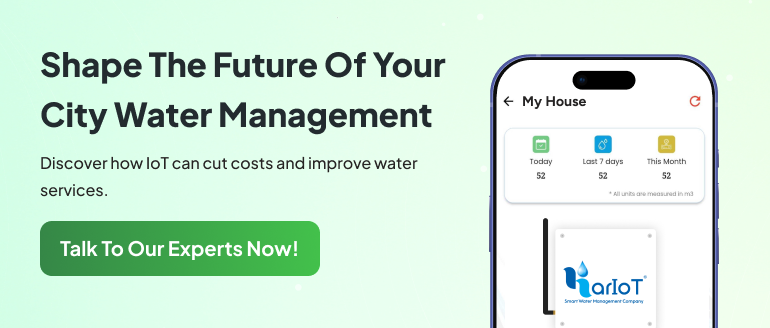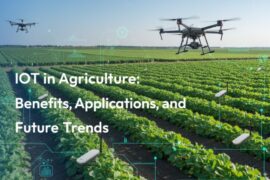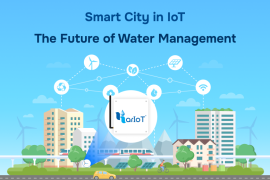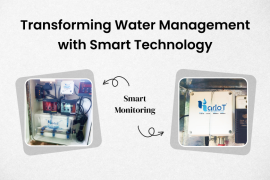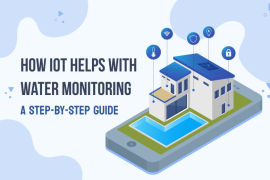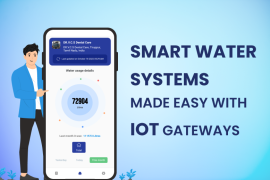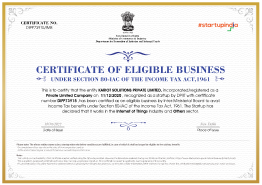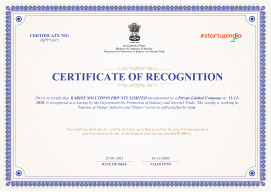Municipalities face growing challenges in utility management of water supply systems. Rapid urbanization, climate change, and aging infrastructure make it harder every year. As demand rises, water utilities need smarter solutions. That’s where IoT comes in.
The Internet of Things (IoT) is transforming utility management. It brings real-time monitoring, predictive maintenance, and better decision-making into the hands of water managers. With IoT, city officials can now respond faster, fix leaks early, and reduce costs effectively. In this blog, we’ll explore how IoT improves utility management in municipal water systems. We’ll cover practical use cases, key benefits, and future opportunities.
What Is Utility Management?
Utility management involves managing and optimizing essential services such as water, electricity, gas, and waste. In the case of water, it means tracking supply, managing distribution, and ensuring efficient usage. Municipalities must prevent wastage, maintain infrastructure, and respond to faults quickly.
Good utility management ensures citizens receive safe and reliable services. It also helps governments stay within budget and meet environmental targets.
Why Traditional Water Management Faces Issues
Traditional water supply management depends on manual checks and delayed reporting. As a result, problems often go unnoticed until they cause major damage.
Some of the biggest challenges include:
- Hidden leaks: Often go unnoticed for weeks or even months.
- Inefficient billing: Leads to revenue loss for utility providers.
- Aging pipes: Cause frequent bursts and water contamination.
- Lack of data: Makes it difficult to plan infrastructure upgrades.
These issues make utility management inefficient and expensive. Cities need tools that offer continuous insights. That’s where IoT devices provide a major breakthrough.
What is IoT in Utility Management?
IoT stands for the Internet of Things. It refers to a network of connected devices that collect and share data in real-time.
In utility management, IoT devices can include:
- Smart water meters
- Flow sensors
- Pressure sensors
- Water quality monitors
- Automated valve controls
These tools send data to central systems through wireless networks. With this data, utility managers can track performance, spot issues, and take immediate action.
Today, many municipalities are adopting smart water management using IoT to improve supply efficiency and transparency.
How IoT Works in Municipal Water Networks
IoT transforms traditional utility systems into smart, responsive networks. Here’s how it works:

Sensors Collect Data
Sensors are placed across the water infrastructure at pipelines, meters, tanks, and treatment facilities. They record data such as flow rate, pressure, and water quality.
Data Is Transmitted
Using low-power networks like NB-IoT or LoRaWAN, sensor data is sent to a cloud-based platform. The data is updated every few minutes or seconds.
Data Is Analyzed
Cloud-based software or AI tools analyze the data. They detect anomalies, trends, or patterns.
Alerts Are Triggered
When issues arise, such as sudden pressure drops, the system notifies operators immediately.
Actions Are Taken
Operators can remotely shut valves, dispatch field teams, or adjust water supply based on real-time conditions. This process helps municipal authorities manage utilities smarter and faster.
In areas with agricultural zones, a smart irrigation system using IoT plays a key role in water optimization and sustainable practices.
Key Benefits of IoT in Utility Management
IoT delivers many advantages to municipal water systems. Let’s look at the major ones:
1. Real-Time Monitoring
Managers can monitor the entire network at any moment. This reduces the need for field inspections. It also enables instant detection of faults.
2. Early Leak Detection
Smart sensors catch even minor leaks. Fixing them early prevents larger problems and saves water.
Fact: According to the World Bank, 25-30% of water is lost due to leaks globally. IoT can cut this loss drastically.
3. Better Resource Allocation
With real-time data, cities can plan water supply based on actual demand. This ensures balanced distribution and avoids overuse.
4. Predictive Maintenance
Historical data helps predict equipment failure. Teams can fix aging pipes or pumps before they break down.
5. Improved Billing Accuracy
Smart meters send usage data directly to billing systems. There’s no need for manual readings or estimations.
6. Energy Efficiency
IoT helps reduce energy used in pumping and treatment by optimizing processes. That cuts costs and supports sustainability goals.
7. Compliance and Reporting
- IoT systems help utilities meet regulations. They provide detailed reports on water quality and system performance.
- IoT remote monitoring solution platforms are particularly helpful in tracking utility systems from a centralized dashboard.
Common Challenges Faced by Municipalities
Municipalities manage large, aging water networks under tight budgets. This leads to several daily challenges that hinder efficiency.
Aging Infrastructure
Pipes, meters, and valves often exceed their lifespan. Replacing them without real-time data leads to guesswork and unnecessary costs.
Manual Monitoring
Without automation, water systems depend on physical checks. This process is slow and prone to errors.
Limited Budgets
Most local governments operate on fixed or shrinking budgets. Expanding or upgrading water systems becomes difficult without smart planning.
Water Loss and Leakage
Unnoticed leaks can waste thousands of gallons daily. Many municipalities struggle to identify and repair them on time.
Inaccurate Billing
Without real-time meters, billing errors become frequent. These lead to customer complaints and revenue loss.
Unpredictable Demand
Seasonal changes and population growth affect water usage. Without data, cities struggle to forecast demand correctly.
Cities are now exploring IoT tank level monitoring to ensure better oversight of storage capacity and demand.
How IoT Supports Sustainable Water Use
Sustainability is no longer optional; it has become essential. Municipalities must meet environmental goals while serving growing populations. IoT supports this balance through several practical ways.

1. Reducing Water Waste
IoT detects and fixes leaks early. Water waste is reduced, helping conserve resources for future generations.
2. Data-Driven Forecasting
Cities can predict water needs using consumption patterns. This ensures they produce only what’s required.
3. Encouraging Conservation
Smart meters allow users to track their usage. Many people use less water when they see how much they consume daily.
4. Optimizing Water Treatment
Sensors track pH, turbidity, and chemical levels. This helps operators treat water only when needed, saving energy and chemicals.
5. Managing Non-Revenue Water
IoT tracks every drop. It shows where water goes unbilled, helping cities close leaks in their financial pipeline.
The use of smart water meters also contributes to better consumer engagement and responsible usage.
Real World Applications of IoT in Water Networks
IoT is being used in cities worldwide to enhance water system performance.
- In Singapore, over 300 sensors help reduce pipe bursts and monitor water quality in real-time.
- Barcelona uses acoustic sensors to detect underground leaks, preventing losses.
- New York City deployed over 800,000 smart meters, increasing customer control and reducing demand.
These examples show that IoT isn’t just a theory; it’s a proven solution. Many are adopting industrial iot solutions to handle large-scale operations efficiently.
Challenges in Implementing IoT for Water Utilities
Despite the benefits, implementation has its difficulties:
- High initial setup and hardware costs
- Data privacy and cybersecurity concerns
- Integration with old legacy systems
- Network connectivity issues in remote areas
However, long-term gains outweigh these hurdles. Planning and phased rollout make adoption smoother. Municipalities should also consider robust iot device management systems to ensure long-term efficiency and reliability.
How to Get Started with IoT for Water Utility Management
- Assess current pain points.
- Choose scalable, reliable IoT devices.
- Select a flexible cloud platform.
- Start with a pilot area.
- Train staff on data analysis.
- Monitor, optimize, and expand gradually.
With the right strategy, IoT adoption becomes manageable and impactful. Tools like iot device monitoring help keep assets secure and operational.
Real-World Example / Case Study
Let’s take a closer look at a successful example of IoT in action.
Case Study: Kariot’s Deployment in a Mid-Sized Indian Municipality
A mid-sized municipality in India partnered with Kariot to improve its water network. The city faced daily complaints about low water pressure and frequent pipe bursts. Manual meter readings, delayed billing, and increased staff workload.
The Solution:
Kariot deployed a network of:
- Smart flow meters across major distribution points
- Pressure sensors at consumer endpoints
- Water quality monitors at treatment facilities
- A cloud dashboard with real-time alerts
The Results:
- Leak response time reduced by 70%
- Customer complaints dropped by 55%
- Meter reading automation saved 3000+ man-hours annually
- Water loss decreased by 25% within 6 months
Residents were able to monitor usage via a citizen app. Utility teams became more responsive. City leaders used data to plan system upgrades.
This case proves how IoT can transform struggling utilities into efficient, citizen-focused operations.
Why Municipalities Should Choose IoT for Utility Management
Cities are under pressure to modernize. But with so many solutions, why should they choose IoT?
Here are compelling reasons:
1. Lower Operational Costs
IoT systems automate daily tasks. This minimizes manual effort and delivers significant cost savings over time.
2. Faster Issue Resolution
Real-time data shortens the time between a fault and a fix. This improves service quality and reduces public complaints.
3. Transparent Governance
IoT provides clear data trails. Officials can show how water is managed, boosting trust among citizens.
4. Future-Ready Infrastructure
IoT systems are scalable. Cities can start small and grow their network as budgets allow.
5. Better Environmental Performance
IoT helps meet water conservation and emission reduction goals. This aligns with national and global sustainability targets.
6. Enhanced Public Engagement
Citizen apps allow users to monitor their usage and get alerts. People become active partners in managing resources. Reliable data flow is enabled through iot gateway devices that connect sensors to cloud platforms seamlessly.
Choosing IoT is not just a tech upgrade; it’s a step toward smarter, more sustainable urban living.
The Future of IoT in Water Utility Management
- AI will automate decisions and detect patterns faster.
- Systems will integrate across utilities: gas, electricity, and waste.
- Citizens will use apps to manage water better.
- Drones and robots may repair pipelines or inspect facilities.
Technology will keep evolving, making water utilities smarter and more efficient. The future depends on sustainable water management backed by smart technology.
Final Thoughts
IoT simplifies utility management in ways that were unthinkable a decade ago. For municipal water networks, the impact is powerful and practical. From real-time leak detection to predictive maintenance, IoT transforms how water systems are monitored and maintained. The benefits include cost savings, greater reliability, and improved citizen services.
With growing pressure on natural resources, every drop counts. IoT helps cities ensure no drop is wasted, and no issue goes unnoticed. Kariot is proud to be a trusted partner for smart cities and sustainable water networks. By embracing IoT, municipalities can turn complex problems into manageable solutions today and for generations to come.


